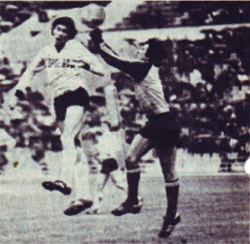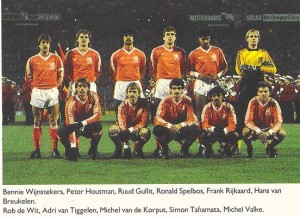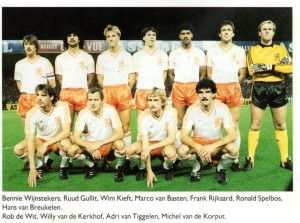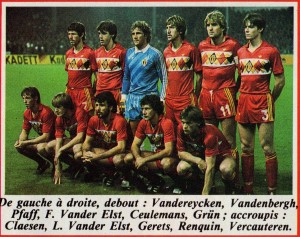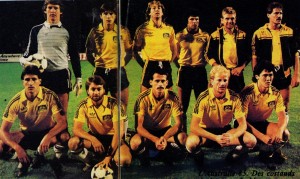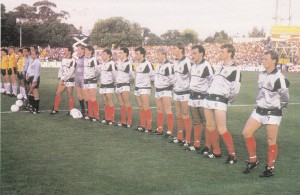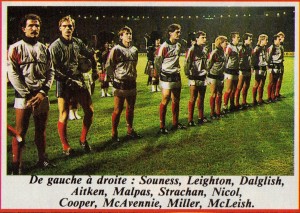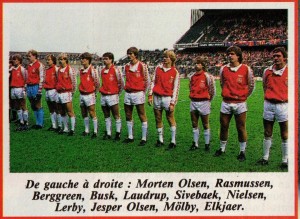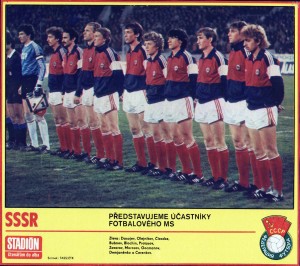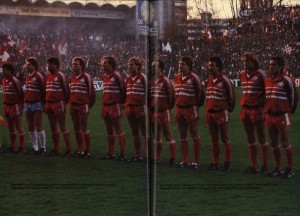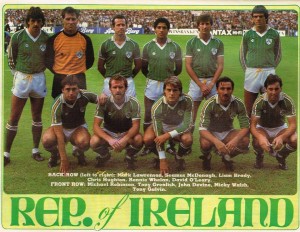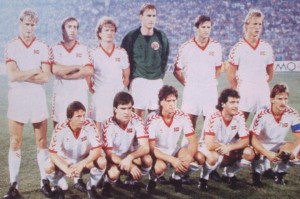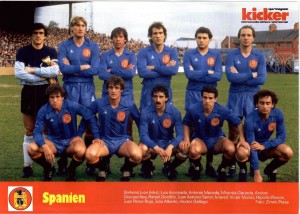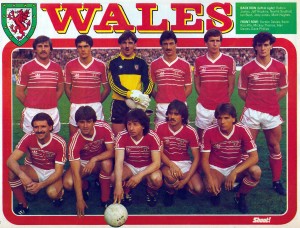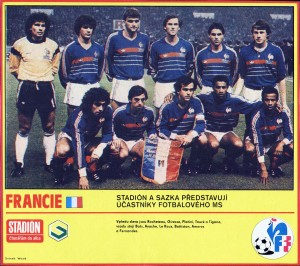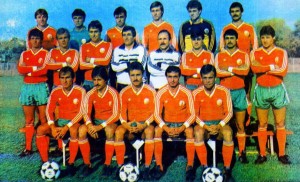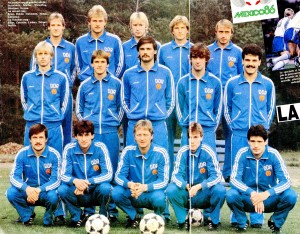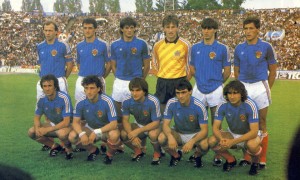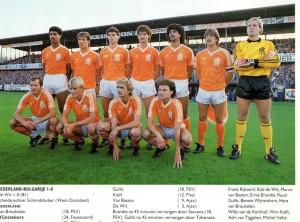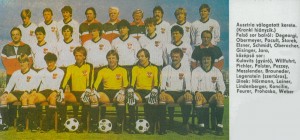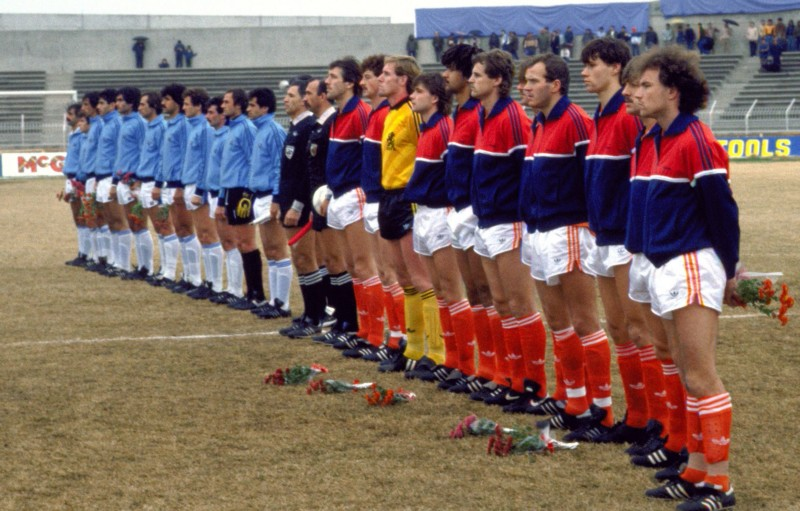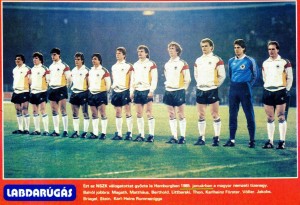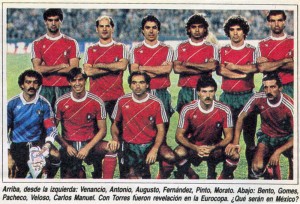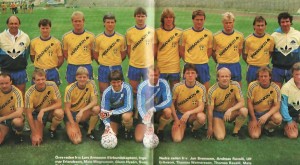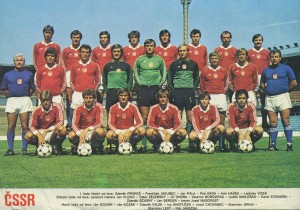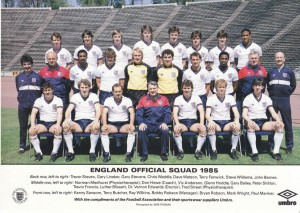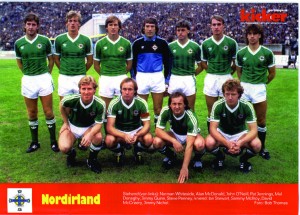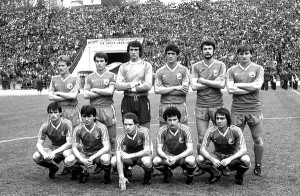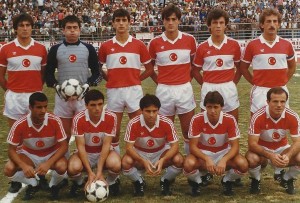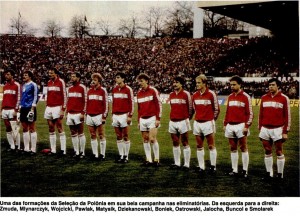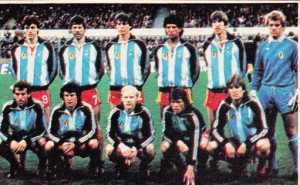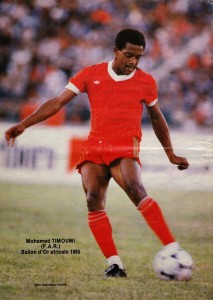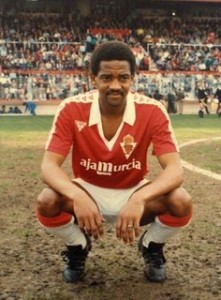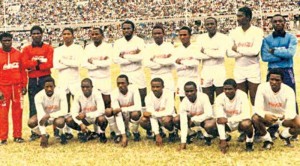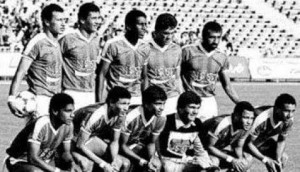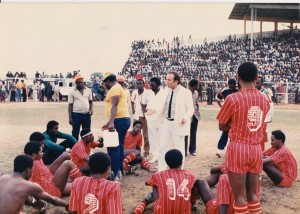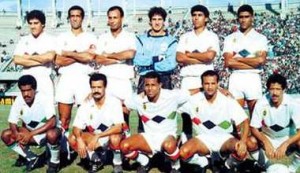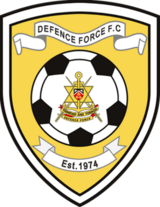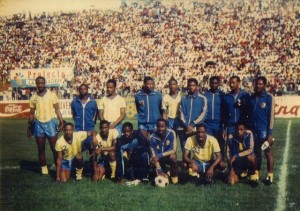South America. Ten teams divided into 3 groups, the winners going directly to the World Cup finals, The second-placed teams plus the 3rd-placed team in Group 8 progress to play-offs for the 4th South American spot at the finals.
Group 8. Argentina was the favourite and Venezuela – the outsider. Short of surprises, Peru and Colombia would go to the play-offs. There were no surprises.
1.ARG^ 6 9 4 1 1 12- 6
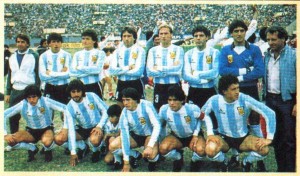
Argentina qualified easily – they won 4 games in a row and then took it easy, losing 3 points to Peru. It did not matter at all. This was new team under new coach, with very different philosophy than Menotti, but the team was still in making. Second row from left: Passarella, Clausen, Garre, Trossero, Russo, Fillol. First row: Buruchaga, Giusti, Barbas, Maradona, Valdano. After the 1982 World Cup fiasco Argentina was somewhat underestimated and formation like this one would be seen as an experimental. To a point, it was true, but one thing was already certain – the new Argentina was going to be made around Maradona.
2.PER> 6 8 3 2 1 8- 4
Peru finished second – no surprise. The Peruvians were certainly proud of themselves for their strong record against Argentina – 1-0 in Lima and 2-2 in Buenos Aires – but their real battle was the next one, the play-offs.
3.COL> 6 6 2 2 2 6- 6
Colombia also went to play-offs as expected and even finished 3rd as expected.
4.VEN 6 1 0 1 5 5-15
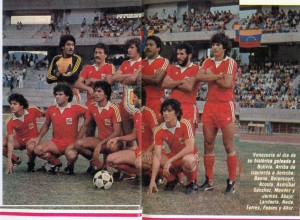
Venezuela – anonymous outsider and performing accordingly. 1 point was their whole achievement, a tie at home with Colombia. Still ‘success’ for Venezuela meant occasional win in a friendly – the team above won ‘historic’ victory against Bolivia.
Group 9. Uruguay and Chile were expected to go ahead, Ecuador was the outsider, the drama was who will win the first place. Historically, Uruguay was the stronger team, they also had good current squad, they won, but with a little help from Ecuador.
1.URU^ 4 6 3 0 1 6- 4
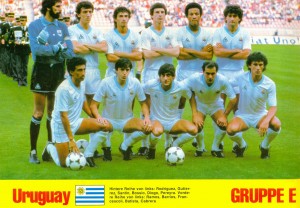
This is not team from the qualifications, but the squad playing in France at the Artemio Franchi Cup, yet, no matter – that was pretty much the team. After disastrous decade, Uruguay was slowly coming back with new bright generation, lead by Francescoli. Diogo and Bossio were the other big names here and few are missing, but that was pretty much the team. Uruguay reached the World Cup finals for the first time after 1974, but it was not easy – the opponent was Chile, Uruguay won at home and lost in Santiago. The match in Montevideo was the last in the group and it was win or die – Uruguay won 2-1. It was helped by Ecuador, which nibbled a point from Chile and thus Uruguay came a point ahead. If not for that, they going to be tied with Chile on points and Chile winning on better goal-difference. But all finished fine in April, so in August Uruguay was playing in France, mostly as part of their preparation for the finals next year.
2.CHI> 4 5 2 1 1 10- 5
Chile was second, as expected, but it was a matter of bad luck too. Well, not exactly bad luck – Chile had somewhat inferior squad compared to Uruguay. They did not have a world-class star like Francescoli, not a leader of such caliber, so they were a bit vulnerable at important moments: their undoing was in the very first match of the group – 1-1 tie in Quito against Ecuador. The lost point proved fatal.
3.ECU 4 1 0 1 3 4-11
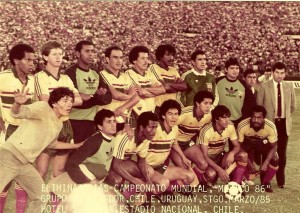
Ecuador had no chances and got just 1 point in their very first match, losing the rest. Chile got its revenge for the lost point in Quito, thrashing Ecuador 6-2 in Santiago, but the Uruguayans were smiling – they qualified directly to the finals thanks to Ecuador. And that was all modest Ecuadorians were good for at that time: to spoil somebody’s chances and unwittingly help somebody else.
Group 10. Again, it was transparent group – Brazil the favourite, Paraguay – to the play-offs, Bolivia – no hopes. The schedule itself made sure there will be no surprises – the last two group games were hosted by Brazil. It was finished before they were played – the reason why the record looks a bit weird: Brazil already won both away matches and Bolivia upset Paraguay with 1-1 tie in Santa Cruz. Both Paraguay and Brazil had 4 points, but even if Paraguay won the second leg in Brazil, their foe still had a home match with Bolivia and finish on top.
1.BRA^ 4 6 2 2 0 6- 2
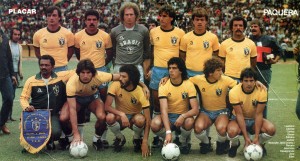
Nobody doubted that Brazil will qualify directly, but the manner was somewhat unusual. This is the squad for the opening game against Bolivia in Santa Cruz. Brazil won it 2-0. Then they won 2-0 in Asuncion. With 2 home games left, it was expected that Brazil will finish with 4 victories. Instead, they tied their home games. Calculated campaign… played at full strength in the first games and then taking it easy at home. In both home games Brazil opened the scores, as if to make sure that there will be no more than a tie. No experiments, it was the best Brazil had, all great stars delivered from their European clubs for the qualification games. It was also aging team, for it was practically the same team which played at the 1982 World Cup. But so far – so good.
2.PAR> 4 4 1 2 1 5- 4
Paraguay was expected to go to the play-offs and they did. Brazil was too much for them, so the real battle was still ahead.
3.BOL 4 2 0 2 2 2- 7
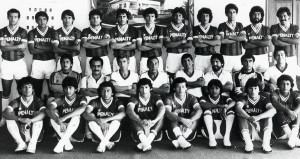
Bolivia did well for an outsider, but they had no chance to qualify and they knew it. Of course, the Bolivians were proud to tie Brazil in Sao Paulo, but Brazil had nothing to play for, so it was a gift in some way. The real success was the opening game at home against Paraguay – the tie was something to brag about, but really it only helped Brazil. So one can say that later Brazil returned the favour at no cost for itself. Even so, Bolivia so rarely got points from mighty leaders that it was good for moral.
The play-offs for the last South American spot at the finals. Semifinals and finals, direct elimination in two legs.
Paraguay won 3-0 against Colombia at home and the Colombians were unable to overcome the difference: they won 2-1 in Cali and were out.
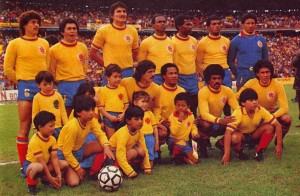
Colombia went as far as they could – they were still one of the weaker teams. And may be they were too careful and old fashioned: Carlos Valderama was not in the squad. Too young to be trusted?
Chile was clearly better than Peru and won both legs – 4-2 in Santiago and 1-0 in Lima.

Peru was in decline, so it was not big surprise they were eliminated. The squad pretty much tells it all: top row from left: Jose Gonzales Ganoza, Juan Caballero, Franco Navarro, Guillermo La Rosa, Wilmar Valencia, Javier Chirinos, Eusebio Acazuso. Middle row: Jose Velasquez, Pedro Requena, Eduardo Malasquez, Ruben Diaz, Leonardo Rojas, Jorge Olaechea, Julio Cesar Uribe. Sitting: Samuel Eugenio, Jorge Ramirez, Cesar Cueto, Luis Reyna, Jorge Hirano, Hugo Gastulo, Juan Carlos Oblitas. Remains from the 1970s – Velasquez, Cueto, Oblitas – and except Uribe no bright young players. And Uribe was not a newcomer either.
Chile and Paraguay met at the final to decide who will go to Mexico. Paraguay won at home 3-0 and then kept a tie in Santiago, after leading 2-1 at the end of the first half. The Chileans eventually equalized, but that was all.
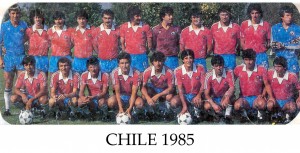
![]()
That was the end of the road for Chile and perhaps rightly so, for it was an end of an era – the current generation may have been overall better than the one of the 1970s, but there were outstanding stars like Figueroa. Point in case: the legendary Carlos Caszely still played a bit in the qualification group, but he is absent in the pictured squad. Too old, his days were over. And no big stars at the moment.
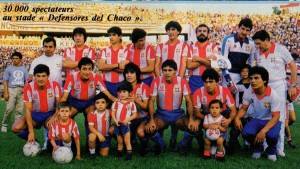
This is the squad winning 3-0 at home and
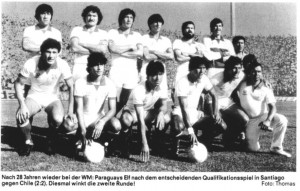
then the same boys finalizing their campaign in Santiago. No names… and no doubt why: this was the first time Paraguay qualified to World Cup finals in 28 years. Great success, but to the European eye – entirely unknown names, no point mentioning them.
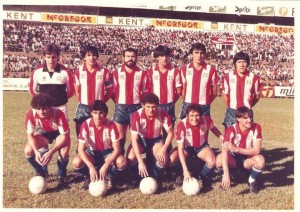
But they must be mentioned, for the players were not exactly anonymous. This is the line-up which faced Bolivia in the original qualification group, but pretty much the same players went all the way to grab the 4th South American spot at the finals. Standing from left: Ever Hugo Almeida, Gustavo Benitez, Rogelio Delgado, Cesar Zabala, Justo Jacquet, Juan Bautista Torales, First row: Javier Villalba , Marciano Rolando Chilavert, Buenaventura Ferreira, Julio Cesar Romero, Alfredo Mendoza.
A squad based on Olimpia (Asuncion) – the team having great domestic run for years, conquering Copa Libertadores as well. They were playing together for years and some were getting old, but they knew each other in and out and had vast experience. Romero was the great star, of course, adding outstanding class to the otherwise gritty team of fighters. It was a team deserving to culminate with playing at world cup finals and it was great they did: at least the world would see them and learn who they were, for even Romero was quite unknown and underappreciated in Europe. Great success for Paraguay by itself, but also they were the most deserving team to qualify behind Brazil, Argentina, and Uruguay.
